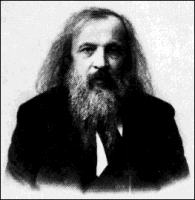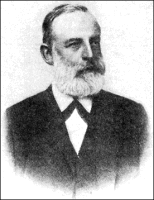|
Scientific
theories are labor-saving devices. If you can replace twenty facts
with five rules, and five rules with one good theory, then you obviously
have made life easier. Mark Twain once remarked, "There is one big
advantage to telling the truth: you don't have to have such a good
memory." The same can be said for constructing theories.
The greatest single achievement in chemistry after the discovery
of atoms was the working out of the periodic table, by Mendeleev
in Russia in 1869, and independently by Meyer in Germany later that
same year. Both men realized that similar chemical behavior recurred
periodically if the elements were listed by increasing atomic weight
(actually atomic number). They both devised the same scheme in which
the elements were arranged so as to display this common chemical
behavior. Chemists no longer had to remember the properties of every
element in isolation. The "twenty facts" of the opening remark had
given way to a few simple rules. But where was the theory that would
explain these rules and account for the rather strange structure
of the periodic table? The unifying theory would have to wait for
nearly another half century, until physicists began applying the
new quantum mechanics to chemistry. Nevertheless, with the periodic
table the first big step toward placing chemistry on a rational
basis had been taken.
|


|